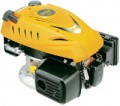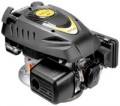Power
The rated power of the engine in horsepower (in fact,
the maximum power that the unit can produce in normal operation, without overloads). Despite the popularity of the designation in watts (see below), horsepower (hp) is still quite widely used to indicate the power of internal combustion engines. 1 HP is approximately 735 watts.
In general, the more powerful the engine, the more speed and tractive effort it is able to develop. On the other hand, this indicator directly affects the weight, dimensions, and most importantly, the cost of the unit, while the real need for high power is relatively rare. Therefore, it is worth choosing according to this indicator, taking into account the features of the planned application; specific recommendations on the selection of an engine for a specific technique and tasks can be found in special sources. We only note that models of the same power can differ in speed and "torque"; see "Shaft speed" for details.
In general, performance up to 8 hp. are considered low, up to 13 hp. — medium, more than 13 hp — high.
Power
The rated power of the engine (the highest power it can deliver in normal operation) in kilowatts. Initially, the power of internal combustion engines (ICE) was usually denoted in horsepower, but now it is also common to record in watts / kilowatts; this, in particular, makes it easier to compare the power of internal combustion engines and electric motors. Some units can be converted to others: 1 hp approximately equal to 0.735 kW.
In general, the more powerful the engine, the more speed and tractive effort it is able to develop. On the other hand, this indicator directly affects the weight, dimensions, and most importantly, the cost of the unit, while the real need for high power is relatively rare. Therefore, it is worth choosing according to this indicator, taking into account the features of the planned application; specific recommendations on choosing an engine for a specific technique and tasks can be found in special sources. We only note that models of the same power can differ in speed and "torque"; see "Shaft speed" for details.
Capacity
The working volume of all engine cylinders. Usually, other things being equal, a larger volume allows you to achieve higher power, but increases fuel consumption and affects the dimensions of the unit.
Piston diameter
The engine piston diameter is a reference parameter — in fact, this data is required very rarely, usually, for repairs and other specific tasks that the average user usually does not deal with at all.
Piston stroke
The distance that an engine piston travels from one extreme point to another. In general, it is a rather specific characteristic and is rarely required in fact (for most ordinary users, it is never needed at all in the entire “life” of the engine).
Crankcase oil capacity
The regular volume of oil in the crankcase, in fact, is the amount of oil necessary for the normal operation of the unit (some deviations are allowed, but only within small limits). This parameter allows you to estimate how much oil is required to fill or refill the engine lubrication system.

